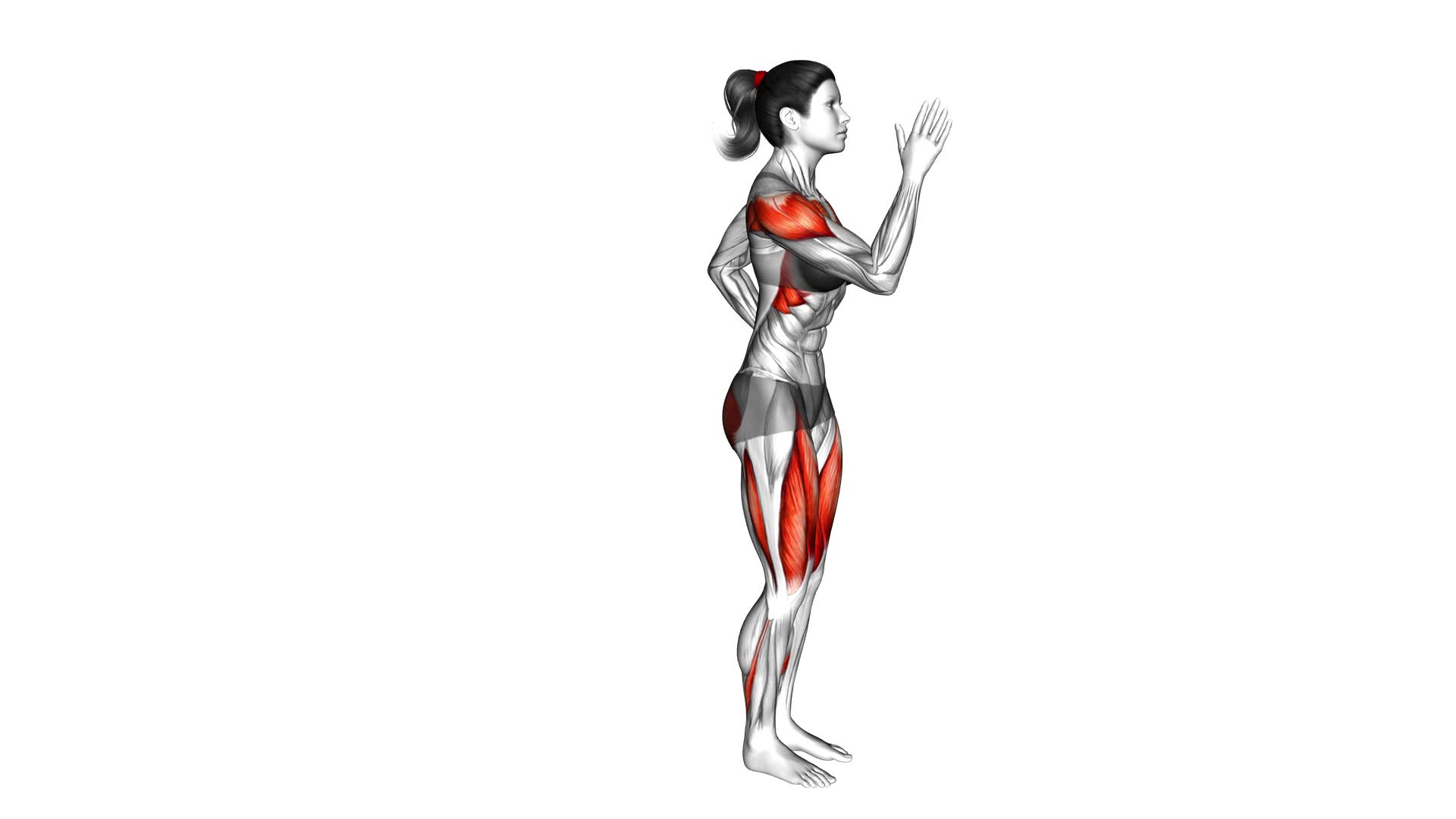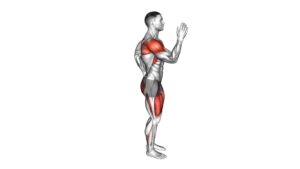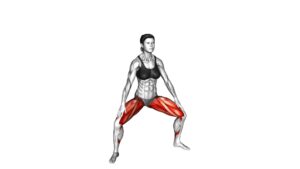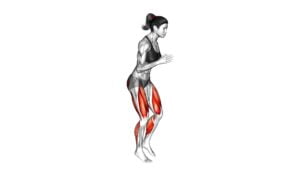Reverse Lunge Quick Arms (female) – Video Exercise Guide & Tips

Get ready to tone your arms while working your lower body with the Reverse Lunge Quick Arms exercise. In this video exercise guide, we'll show you how to perform this effective move, specifically tailored for females.
Watch This Exercise Video
You'll learn the proper form, variations, and essential tips to maximize your results. Avoid common mistakes and get ready to feel the burn with this powerful exercise.
Let's get started!
Key Takeaways
- Reverse Lunge Quick Arms tones and strengthens both the legs and arms.
- This exercise provides a full-body workout, engaging multiple muscle groups simultaneously.
- It improves balance, stability, and coordination.
- Proper form and technique, along with gradually increasing intensity, are important for maximizing the benefits of this exercise.
Benefits of Reverse Lunge Quick Arms
You will frequently experience the benefits of Reverse Lunge Quick Arms. This exercise not only helps to tone and strengthen your legs, but it also targets your arms, giving you a complete full-body workout.
One of the great things about the Reverse Lunge Quick Arms is that it can be modified to suit your fitness level and specific goals. By using dumbbells or resistance bands, you can increase the intensity of the arm workout, helping to build muscle and improve definition in your biceps, triceps, and shoulders.
Additionally, the reverse lunge itself engages your quadriceps, hamstrings, and glutes, providing an excellent lower body workout. By incorporating arm movements into the exercise, you're able to work multiple muscle groups simultaneously, making your workout more efficient and effective.
Not only will Reverse Lunge Quick Arms help to tone and strengthen your arms, but it will also improve your overall balance, stability, and coordination.
Proper Form for Reverse Lunge Quick Arms
To perform the Reverse Lunge Quick Arms exercise correctly, start by standing with your feet hip-width apart.
This exercise not only targets your lower body but also engages your upper body, making it a great full-body workout.
Maintaining correct posture is essential throughout the exercise. Keep your chest up, shoulders back, and core engaged. This will help you maintain stability and prevent any strain on your back.
As you step back into the lunge, make sure to keep your front knee aligned with your ankle, while the back knee gently lowers towards the ground. Avoid letting your front knee extend beyond your toes, as this can put unnecessary pressure on your joints.
While performing the exercise, it's important to focus on your breathing technique. Inhale as you step back into the lunge, and exhale as you return to the starting position. This rhythmic breathing will help you maintain control and stability throughout the exercise.
Remember to start with a weight that you're comfortable with and gradually increase the intensity as you become more confident.
Variations of Reverse Lunge Quick Arms
Explore different ways to modify the Reverse Lunge Quick Arms exercise for added challenge and variety. Here are four variations of the exercise that you can try:
- Reverse Lunge with Dumbbells: Hold a pair of dumbbells in your hands, with your arms extended down by your sides. As you perform the reverse lunge, keep your arms straight and lift them up to shoulder height. This adds resistance to your upper body, engaging your shoulders and arms.
- Reverse Lunge with Overhead Press: Hold a dumbbell in each hand, and as you step back into the reverse lunge, bring the dumbbells up to shoulder level. As you rise back up, press the dumbbells overhead, fully extending your arms. This variation targets your shoulders and triceps.
- Reverse Lunge with Bicep Curls: Hold a dumbbell in each hand, palms facing forward. As you step back into the reverse lunge, curl the dumbbells up towards your shoulders. Lower the dumbbells as you rise back up. This modification challenges your biceps and helps improve upper body strength.
- Reverse Lunge with Resistance Band: Place a resistance band around your wrists, and as you perform the reverse lunge, pull the band apart, engaging your chest and upper back muscles. This variation provides resistance throughout the movement, enhancing overall upper body strength.
Tips for a More Effective Reverse Lunge Quick Arms
To maximize the effectiveness of your Reverse Lunge Quick Arms, incorporate these helpful tips.
First, focus on improving your balance during the exercise. Engage your core muscles and keep your chest lifted throughout the movement. This will help you maintain stability and prevent any wobbling or stumbling.
Next, work on increasing your upper body strength. As you perform the quick arm movements, make sure to fully extend your arms and engage your shoulder and back muscles. This won't only enhance the effectiveness of the exercise but also help you tone and strengthen your upper body.
Additionally, pay attention to your form. Keep your knees aligned with your ankles and avoid letting them extend beyond your toes. This will protect your knees and prevent any unnecessary strain.
Lastly, remember to breathe. Inhale as you lower into the lunge and exhale as you push back up. This will provide your muscles with the oxygen they need and help you maintain control throughout the exercise.
By implementing these tips, you can ensure that you're getting the most out of your Reverse Lunge Quick Arms workout.
Now, let's move on to the next section and discuss common mistakes to avoid in reverse lunge quick arms.
Common Mistakes to Avoid in Reverse Lunge Quick Arms
Avoid these common mistakes to ensure proper form and maximize the effectiveness of your Reverse Lunge Quick Arms workout:
- Allowing your knees to go past your toes: One of the most common mistakes in the reverse lunge is letting your front knee extend too far forward. This puts excessive strain on your knee joint and can lead to injury. Make sure to keep your front knee aligned with your ankle throughout the movement.
- Leaning too far forward: Another mistake is leaning too far forward during the lunge. This not only puts strain on your lower back but also takes away from the engagement of your leg muscles. Keep your upper body upright and core engaged to maintain proper form.
- Neglecting proper arm movement: The reverse lunge quick arms exercise requires coordinated arm movement. Avoid swinging your arms haphazardly or not using them at all. Keep your elbows bent at 90 degrees and move them forward and backward in sync with your leg movement.
- Rushing through the exercise: To get the most out of your reverse lunge quick arms workout, take your time and focus on proper form. Rushing through the exercise can compromise your technique and reduce the effectiveness of the workout.
Frequently Asked Questions
How Many Calories Can You Burn by Doing Reverse Lunge Quick Arms?
By doing the Reverse Lunge Quick Arms exercise, you can burn calories and strengthen your muscles. While the exact number of calories burned varies depending on factors such as body weight and intensity, this exercise can be an effective way to increase your calorie burn.
Additionally, if you have knee problems, there are modifications you can make to protect your knees while still reaping the benefits of this exercise.
Can I Do Reverse Lunge Quick Arms if I Have Knee Problems?
If you have knee problems, it's important to find alternative exercises that won't aggravate your condition. Reverse lunge quick arms may not be the best choice for you, as it involves putting weight on your knees.
However, there are modifications you can make to protect your knees, such as doing a stationary lunge or using a chair for support.
Always listen to your body and consult with a healthcare professional for personalized advice.
How Often Should I Incorporate Reverse Lunge Quick Arms Into My Workout Routine?
To maximize the benefits of reverse lunge quick arms, it's important to incorporate them into your workout routine consistently. Aim to do this exercise at least 2-3 times a week.
By doing so, you'll not only improve your lower body strength and stability but also target your upper body muscles. This dynamic movement is a great way to challenge multiple muscle groups and add variety to your workouts.
Can Reverse Lunge Quick Arms Help Me Build Upper Body Strength?
Yes, reverse lunge quick arms can definitely help you build upper body strength.
This exercise targets your arms, shoulders, and chest while also engaging your core and lower body.
By incorporating reverse lunge quick arms into your workout routine, you can improve your overall fitness and achieve a more balanced and toned physique.
If you're a beginner, don't worry! This exercise can be modified to suit your fitness level, allowing you to gradually increase intensity as you get stronger.
Is It Necessary to Use Weights While Performing Reverse Lunge Quick Arms?
Using weights while performing reverse lunge quick arms isn't necessary, but it can provide additional resistance and increase the challenge.
Incorporating reverse lunge quick arms into your workout routine has numerous benefits, such as improving upper body strength, toning your arms, and increasing overall calorie burn.
For beginners, modifications can be made by using lighter weights or no weights at all, focusing on proper form and technique.
Conclusion
In conclusion, the reverse lunge quick arms exercise is a highly beneficial workout that targets multiple muscle groups, including the legs, glutes, and arms.
By incorporating quick arm movements into the reverse lunge, you can increase the intensity and effectiveness of the exercise.
Remember to maintain proper form and posture throughout the workout to avoid any potential injuries.
With variations and tips for improvement, you can make the reverse lunge quick arms a key part of your fitness routine.

Author
Years ago, the spark of my life’s passion ignited in my mind the moment I stepped into the local gym for the first time. The inaugural bead of perspiration, the initial endeavor, the very first surge of endorphins, and a sense of pride that washed over me post-workout marked the beginning of my deep-seated interest in strength sports, fitness, and sports nutrition. This very curiosity blossomed rapidly into a profound fascination, propelling me to earn a Master’s degree in Physical Education from the Academy of Physical Education in Krakow, followed by a Sports Manager diploma from the Jagiellonian University. My journey of growth led me to gain more specialized qualifications, such as being a certified personal trainer with a focus on sports dietetics, a lifeguard, and an instructor for wellness and corrective gymnastics. Theoretical knowledge paired seamlessly with practical experience, reinforcing my belief that the transformation of individuals under my guidance was also a reflection of my personal growth. This belief holds true even today. Each day, I strive to push the boundaries and explore new realms. These realms gently elevate me to greater heights. The unique combination of passion for my field and the continuous quest for growth fuels my drive to break new ground.



